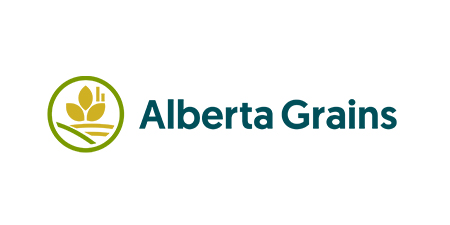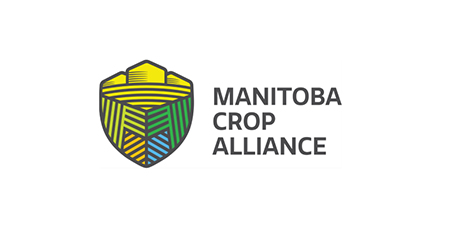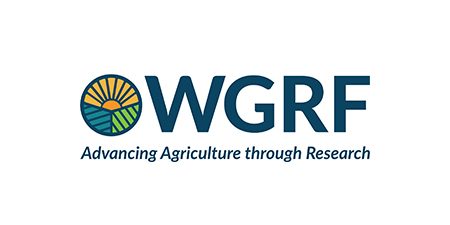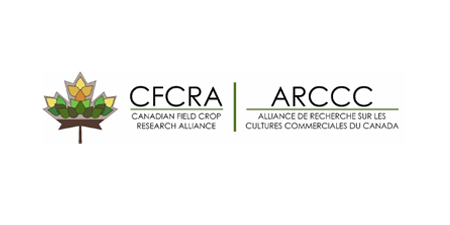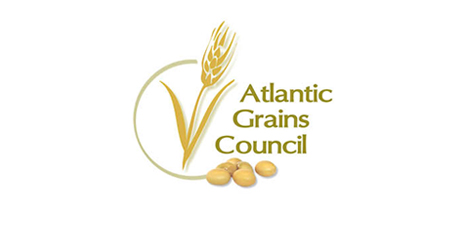Canadian National Wheat Cluster
The CWRC administered the 2018-23 Canadian National Wheat Cluster, which consisted of a group of industry-led research projects submitted by various research institutions (universities and Agriculture and Agri-Food Canada [AAFC] research centres) aimed at ensuring profitability for producers and long-term sustainability of wheat in the cropping rotation.
Theme Areas
Worth nearly $25 million over five years, projects funded through the 2018-23 Canadian National Wheat Cluster addressed common issues that farmers face and led to improved varieties and agronomic practices. This cluster had four theme areas:
CULTIVAR DEVELOPMENT TO ENHANCE COMPETITIVENESS AND SUSTAINABILITY
The wheat cluster delivered higher-yielding wheat varieties to Canadian producers. The new varieties include the best sources of disease and insect resistance and are better able to withstand adverse environmental conditions expected under climate change. Strict quality standards, a cornerstone of Canada’s brand, ensure that new varieties address market needs. The wheat varieties developed through this program will contribute to the continued success of Canadian producers and have an important impact on the Canadian and rural economies.
Cultivar development in the wheat cluster involved many disciplines including pathology, cereal chemistry, biotechnology, cytogenetics, entomology, physiology, biometrics, and agronomy. Extensive collaboration between breeders and other disciplines from across Canada made this cluster national in scope and world class.
Each wheat class in Canada must meet specific end-use characteristics and have strong agronomic performance in the region for which it is developed. In addition to these challenges there are disruptive correlations between many key traits. For example, grain yield and protein content are negatively correlated, whereas grain yield and the time to maturity are positively correlated. In the wheat cluster, breeders employed the next generation of innovation and scientific tools to overcome the challenges of breeding and reach their targets.
The wheat cluster theme of cultivar development directly impacts Canada’s trade and exports, maintaining or growing Canada’s position as one of the top five exporters of wheat. In additional to wheat’s role in the trade and export market, the new cultivars developed under this theme will support a vibrant domestic market.
The large body of research under the cultivar development theme aligned with all Canadian Agricultural Partnership (CAP) program priorities, with significant impact on science, research and innovation, markets and trade, environmental sustainability and climate change, value-added agriculture, and risk management.
Pre-breeding for future resistance to disease and insects
Plant breeding and domestication has narrowed the diversity available to plant breeders, slowing the progress of crop improvement. The introgression of useful genes into cultivated wheat germplasm can provide breeders with tools to accelerate the development of varieties with new sources of disease resistance. For example, UG99 is a race of stem rust that has the capacity to reduce yields by more than 50 per cent. Pre-breeding work on UG99 resistance has been underway for almost a decade and will provide a source of resistance for Canadian wheat varieties before this disease establishes in North America.
While pre-breeding work is a long-term investment, activities within this theme also applied biotechnology tools to accelerate the breeding of new varieties in the CAP program. The application of biotechnology through molecular breeding and doubled haploid production will improve the efficiency of bringing new gene combinations together and increase the rate at which those gene combinations are deployed to farmers.
Support of cultivar enhancement through the application of biotechnology will accelerate the development of superior breeding lines with high value traits, such as resilience to climate and pests, higher yield and superior end-use grain quality. By enhancing the efficiency of cultivar development, this theme contributed to the CAP program priorities of science, research and innovation, markets and trade, environmental sustainability and climate change, value-added agriculture, and risk management.
Insect resistance to protect grain yield and quality
Pests such as orange blossom wheat midge have the potential to cause approximately $3-300 million in annual yield and grade losses to wheat production. The activity dedicated to wheat midge hoped to pyramid a new mechanism of resistance that, when combined with the Sm1 gene and existing refuge of susceptible wheat, will maintain continued resistance in western wheat cultivars.
The theme of disease and insect resistance aligned strongly with the CAP priorities of science, research and innovation, environmental sustainability and climate change, and risk management.
Crop management to capture the genetic potential and minimize environmental footprint
According to a study by Thomas and Graf, on-farm yield gains are attributed to a combination of new cultivars and upgraded agronomy. To support the genetic potential of new varieties and reduce costly and environmentally damaging chemical inputs, a new suite of work not previously included in the Growing Forward 2 wheat cluster was added to this cluster.
The crop management theme was relatively small in requested funding compared to new cultivar development. However, despite the narrower scope, the activities were critically important to addressing management practices to reduce the damage caused by disease expression and for developing best practices to support the incorporation of winter wheat in a sustainable cropping rotation.
The theme of crop management aligned with the CAP priorities of science, research and innovation, markets and trade, environmental sustainability and climate change, and risk management.
Our Funding
Funding for the 2018-23 Canadian National Wheat Cluster was provided by the following organizations:


